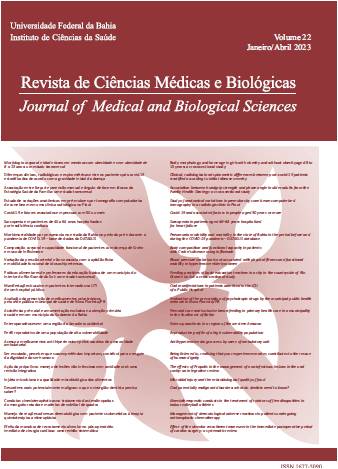Association between handgrip strength and phase angle in elderly people from the Family Health Strategy
a cross-sectional study
DOI:
https://doi.org/10.9771/cmbio.v22i1.52728Keywords:
Handgrip Strength, Elderly, Muscle strength, Electrical Impedance, Phase Angle, Primary Health CareAbstract
Introduction: Handgrip Strength (HGS) is an indicator of health and functionality of the elderly, which decreases over time, impacted by aspects including changes in body composition. Objective: to investigate the association between the Standardized Phase Angle (SPhA) and HGS in community-dwelling Primary Health Care (PHC) elderly individuals. Methodology: cross-sectional study, with people aged 60 or over, assisted in the PHC. The dependent variable was the HGS measured using a dynamometer. The main independent variable was the SPhA based on gender and age range, calculated from the phase angle obtained by bioimpedance. Block-by-block logistic regression was performed, including variables that were associated with a critical level lower than 10% in the model. Results: of the 296 individuals assessed, 28.0% had low HGS and 15.9% had SPhA < -1.65°. The variables inserted in the final logistic regression model, together with the SPhA, were gender, age group, Body Mass Index (BMI) and Calf Circumference (CC). The analysis showed that SPhA < -1.65° increases the chance of the elderly person having low HGS, both in the unadjusted analysis (OR = 2.71; 95% CI 1.43-5.15) and in the final model (OR = 2.35; 95%CI 1.14-4.87). Conclusion: the SPhA was associated with HGS, regardless of the interaction with sex, age group, BMI and WC. Its use can contribute to the evaluation of the elderly, especially when HGS measurement is not possible.
Downloads
Downloads
Published
How to Cite
Issue
Section
License
Copyright (c) 2023 Journal of Medical and Biological Sciences

This work is licensed under a Creative Commons Attribution 4.0 International License.
The Journal of Medical and Biological Sciences reserves all copyrights of published works, including translations, allowing, however, their subsequent reproduction as transcription, with proper citation of source, through the Creative Commons license. The periodical has free and free access.


